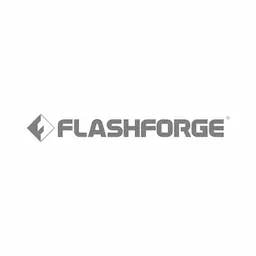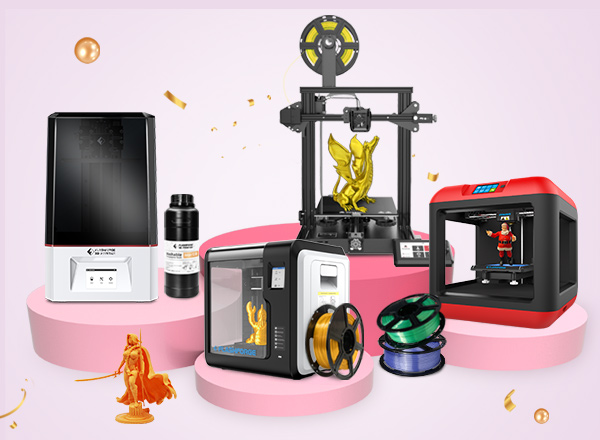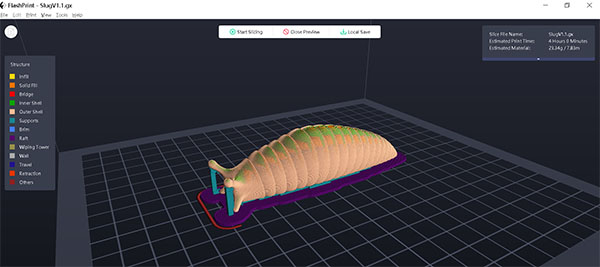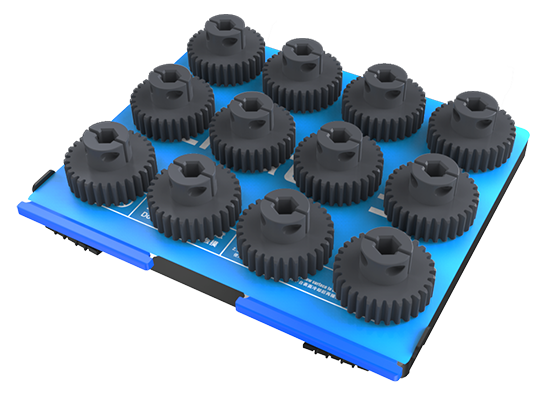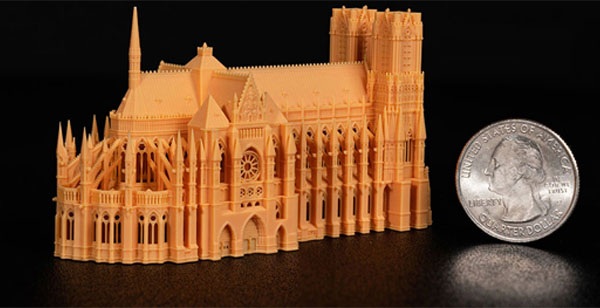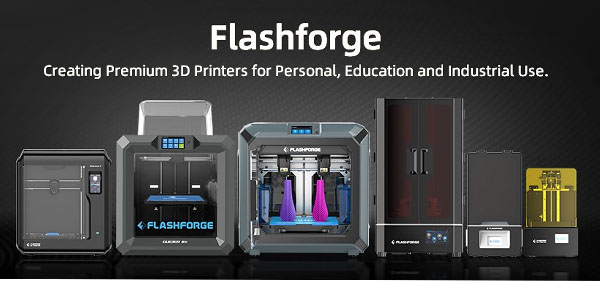More and more people are considering purchasing a 3D printer especially since the 2020 COVID-19 pandemic. Favorable characteristics of 3D printing, like flexible manufacturing, customized production, and localized output, get increasingly prominent. People are aware that in the rapidly-changing world, using a 3D printer may get an advantageous marginal effect over traditional ways.
However, there are so many choices on 3D printers which are applying various techniques and principles. Which one to buy? What to consider when selecting a 3D printer? This article shows 6 factors you need to consider when selecting a 3D printer.
1. Speed of creating digital model and final printing
Here it is noted that the speed refers to the speed of getting the 3D digital model as well as getting it printed. Since there are so many open-source websites where you can download the ready-made 3D model files free or via paying a little fee, it would be easy and fast to get the digital models in this way. However, if you want a model that is unique and specific and nobody did or shared it before, you have to customize it yourself by using some 3D model designing tools. This would cost you some time to prepare the 3D models. So, the first factor to consider when selecting a 3D printer is to think it clearly what you want to print and whether you are able to get the models quickly to realize the final printing!
As to final printing speed, it’s decided by the printer and the operation settings when you print it. Taking the Flashforge Adventurer 4 3D printer as example, it costs 4 hours and 7.8m-long PLA filament if printing a slug model sized at 100mm x 27mm x 26mm. You can adjust the print speed in FlashPrint slicer to make it faster, but the print speed makes a difference on the final print quality. You need some experience to set it well.
2. Final prints' strength
Will the object printed with a 3D printer meet the strength requirements? If it was a mechanical part to be used in practical scenes, would it qualified to withstand outside force from different directions and different working temperatures? In this situation, you need to choose a professional 3D printer and print with the material that meets your requirements.
3. Printing precision
If making a rank on 3D printer accuracy degree, I think it is metal 3D printer > resin 3D printer > FDM 3D printer.
The above three types of 3D printers adopt different printing principles. The metal 3D printer gets the most precise prints. Of course, it’s the most expensive one, and usually used in industrial production. The next is the resin 3D printer. The resin printed model is soft in texture. Even if there are slight layer lines on the print surface, they can be easily polished.
The last is the FDM 3D printer. The printed object is made layer by layer, sometime leaving layer lines, gaps, or glitches. Still there are some resolutions to make the FDM printing more perfect:
a. Reducing the layer height when making slicing in slicer software. The default layer height set in FlashPrint is 0.2mm; reducing it to 0.1mm would obviously improve the model print quality, while the printing time would get longer.
b. Changing with a new slicer. Flashforge slicer has different versions, and there are also different slicers, cura for Flashforge Adventurer 3 series and for other 3D pritners, they set different print routes when printing. Try to change a new one, and maybe it gets better.
c. Reducing printing speed also has obviously good effects on improving model’s surface precision, especially for the protruding parts on the side face of the model.
4. 3D printing materials
What’s your expected application with the 3D printer? Knowing your required materials is very important for choosing a most suitable 3D printer. Generally speaking, we select a 3D printer that could print with a material that is the same as or close to the one we used in final mass production.
5. Printing size
Each 3D printer has its own build volume and production capacity. You need to consider the final size of the objects you want. For instance, the build size of Flashforge Finder is 140*140*140 mm, while Flashforge Creator 200*148*150mm. If you want to print larger objects, you need to select a larger 3D printer with larger build size.
6. Printer's price and consumable cost
Flashforge manufactured many cost-effective desktop 3D printers, price set bellow $300, and suitable for 3D printer enthusiasts.
a. Flashforge Finder. Build volume: 140*140*140 mm; price: $279. The printed is discontinued. Feel free to take a look at its upgrade version Finder 3.
b. Flashforge Adventurer 3C. Print Volume: 150*150*150 mm; price: $249.
c. Voxelab Aquila X2. Print Volume220*220*250mm; price: $199.
For professional use, Flashforge also offers many choices, such as Guider series 3D printers.
Purchasing a 3D printer, you not only pay for the machine, but also for continuous consumables. For example, for metal 3D printers, in addition to the expensive initial cost, you’ll also bear the daily operation consumption of metal power. For resin 3D printers, besides the liquid resin daily consumed for printing, you’ll need to prepare alcohol solvent to clean the prints and disposable rubber gloves to protect your hands. For FDM 3D printers, you should notice that some carbon-fiber filaments are susceptible to air moisture. Once unsealing them, you need to run them out before expiration date.
Write in the end
Generally speaking, whether for personal consumers, for education, or for advanced-level application, 3D printer is a product worth your starting, but it does need careful consideration on which one to select. For some DIY objects or daily used gadgets, welcome to purchase Flashforge FDM desktop 3D printers; for those requiring stable and high-precision printing quality, welcome to purchase Flashforge Resin 3D printers. Carefully consider your practical requirements before deciding which one to buy!



